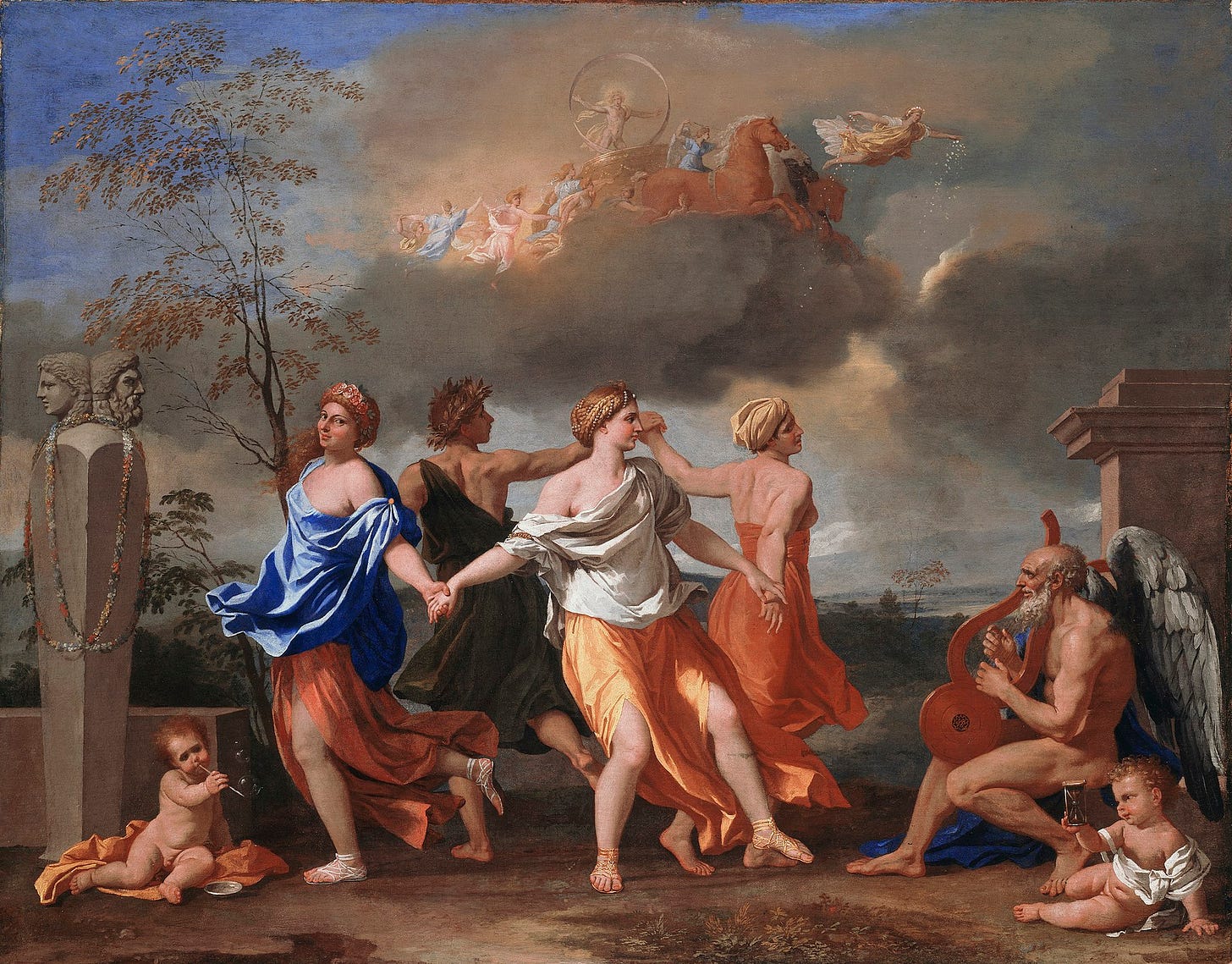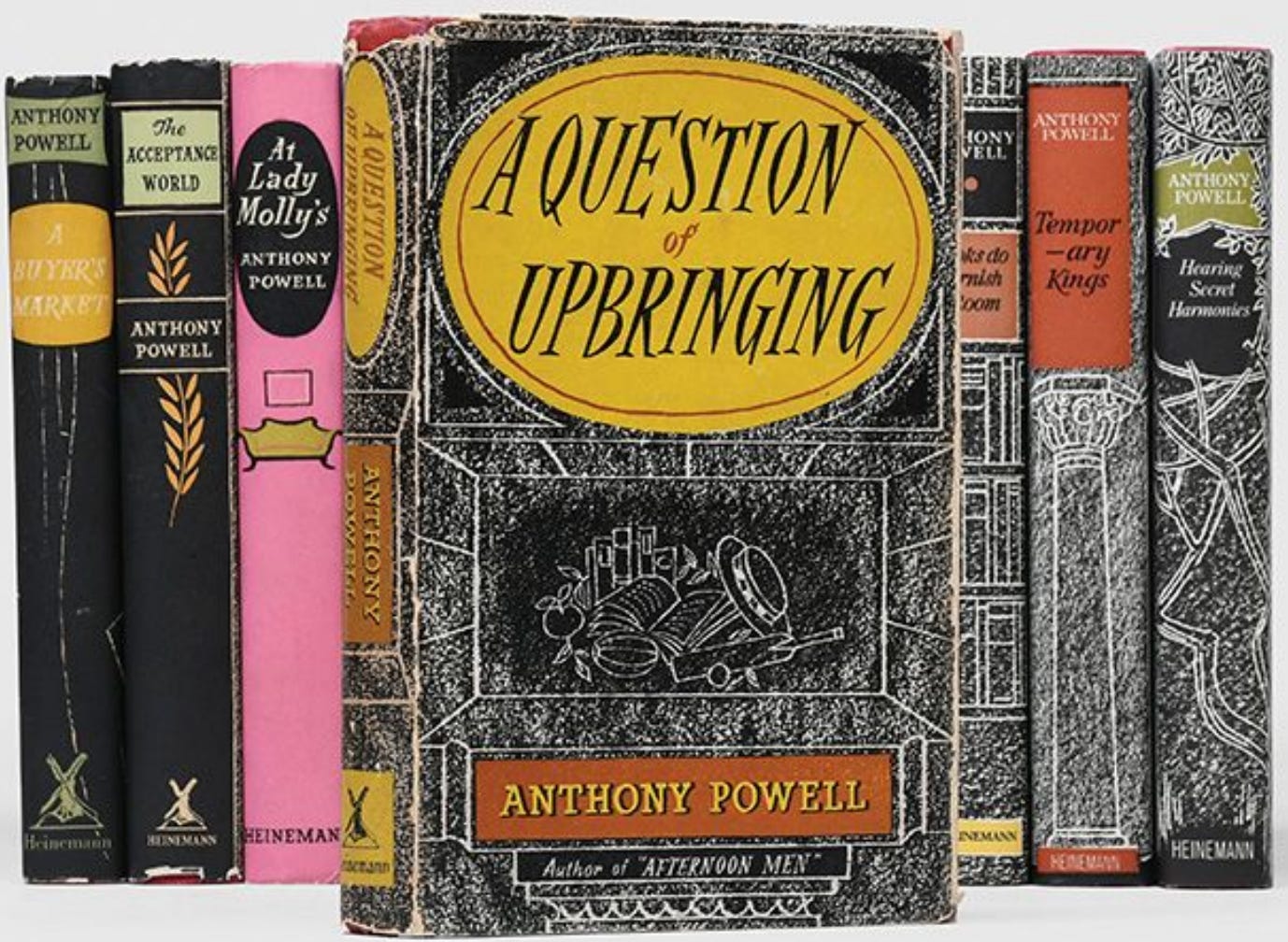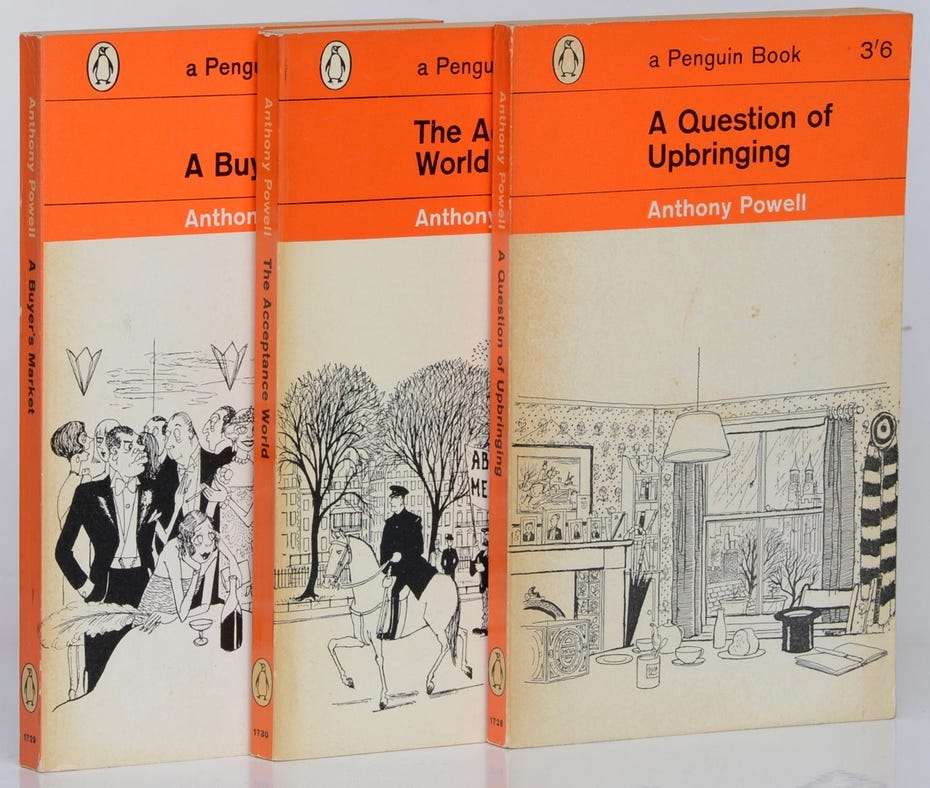A Dance to the Music of Time in 2025
Please do join me in a year-long read of Anthony Powell's remarkable classic
The idea of a reading progamme has been at the forefront my mind for the last couple of years as my next book but one is about this very subject, My Year of Reading Welshly (out next summer with Calon Books). After 12 months of doing what it says on the tin I am up for a change of subject and so I am going to return to Anthony Powell’s 12-volume roman fleuve A Dance to the Music of Time. And I’m hoping some of you will join me.
Powell’s central theme, set out in the first book A Question of Upbringing, is inspired by a 17th century painting by Nicolas Poussin (pictured above - you can see it at the Wallace Collection in London, it’s surprisingly small) in which four figures representing the passing of the seasons dance together in a circle. In the first few pages Powell comments that:
The image of Time brought thoughts of mortality: of human beings, facing outward like the Seasons, moving hand in hand in intricate measure, stepping slowly, methodically sometimes a trifle awkwardly, in evolutions that take recognisable shape: or breaking into seemingly meaningless gyrations, while partners disappear only to reappear again, once more giving pattern to the spectacle: unable to control the melody, unable, perhaps, to control the steps of the dance.
Set between the early 1920s and the start of the 1970s, the books show the gradual unravelling of this dance, initially among a group of schoolfriends (one of whom, Nick Jenkins, is the narrator throughout the series), but increasingly in the wider world and with a vast number of characters, weaving in and out of the action. Powell wrote them at regular intervals, starting in 1951 and ending in 1975.
It’s hard to summarise the series, which has been serialised several times on radio and television. Wikipedia offers “an often comic examination of movements and manners, power and passivity in English political, cultural and military life in the mid-20th century” which is not bad, if perhaps a bit vague. The Anthony Powell Society quotes critic Robert L Selig which I think is better:
“The slowly developing narrative centers around life’s poignant encounters between friends and lovers who later drift apart and yet keep reencountering each other over numerous unfolding decades as they move through the vicissitudes of marriage, work, aging, and ultimately death. Until the last three volumes, the next standard excitements of old-fashioned plots (What will happen next? Will x marry y? Will y murder z?) seem far less important than time’s slow reshuffling of friends, acquaintances, and lovers in intricate human arabesques.”
It’s been compared to Proust but it’s far more like Elizabeth Jane Howard’s marvellous Cazalet Chronicles (which only run to five at the moment, though her niece Louisa Young has been signed up for three more). More recently, Jonathan Coe has sucessfully done something along similar lines with his Rotters Club/Closed Circle/Middle England trilogy.
I first read the series in my twenties, again in my forties, and now I’m in my fifties it feels like a good time to give it another spin. Like the finest writing, you appreciate different facets of it at different points in your life so it will be interesting to see what jumps out at me this time.
As there’s 12 books, it fits neatly into a year’s worth of reading. At the end of each month, I’ll post up my thoughts and I’d be delighted to hear what you make of it too, of the ambitious Widmerpool, dissolute Stringham, occultist Dr Trelawney, femme fatale Pamela Flitton, novelist X. Trapnel, compser Hugh Moreland, and businessman Sir Magnus Donners. Many of the characters are partly based on Powell’s social circle including George Orwell, Aleister Crowley, and Powell himself which brings additional fun to the dance.
In terms of editions, I prefer the original hardback ones published by Heinemann with cover illustrations by James Broom-Lynne, pictured below. They are a nice size to hold and the print is easily readable. No longer in print, they’re easily available online secondhand (range of prices depending on condition, dust jacket, etc, but often not cheap).
I also like the paperback series Penguin brought out with covers by Osbert Lancaster, the first three shown below, although sadly this project stalled three-quarters of the way through so you’d have to switch horses for the last few.
The Fontana series illustrated by Marc Boxer is also popular, not least because it’s usually the cheapest option, though his work is not my personal cup of tea. If you want to dip into your savings, The Folio Society has produced a lovely illustrated edition in four volumes (plus slipcase), as did Arrow in a tie-in with the television series in the 1990s (which did a decent job of condensing it all with a fabulous cast of British acting talent - below is the Spotify soundtrack mixtape of the series).
Arrow has done a more recent edition of all 12 individual volumes with striking black and white covers. And of course it’s available as an audiobook if that’s how you prefer to consume it, though I’d strongly recommend an unabridged rather than abridged version.
So, there we go. On January 31 look out for an entire newsletter focusing on A Question of Upbringing, including relevant bits and bobs for exploring it all further.







Good plan. Count me in. I read it probably 20 years ago and loved it. I was subsequently given the Folio Society version which have been sitting on my shelves ever since. So it’ll be a good excuse to crack them open at last. Need to finish Petroc’s Cornwall book first.
I'm in! Lovely idea